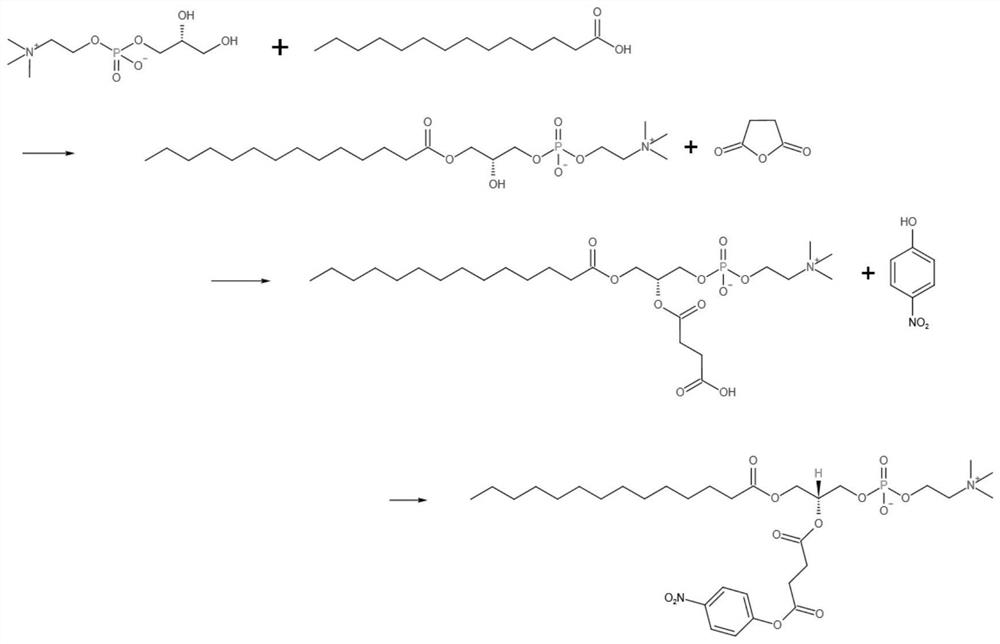Detection reagent for lipoprotein-associated phospholipase A2, preparation method and determination method
A technology for detecting reagents and phospholipases, which is applied to measuring devices, instruments, scientific instruments, etc., and can solve problems such as poor repeatability, high cost, and radioactive contamination of reagents
- Summary
- Abstract
- Description
- Claims
- Application Information
AI Technical Summary
Problems solved by technology
Method used
Image
Examples
Embodiment Construction
[0046]The following description serves to disclose the present invention to enable those skilled in the art to carry out the present invention. The preferred embodiments described below are only examples, and those skilled in the art can devise other obvious variations.
[0047] A detection reagent for lipoprotein-associated phospholipase A2, which is composed of reagent R1, reagent R2 and reagent R3 that are packaged independently of each other. Reagent R1 is formed by dissolving ethylenediaminetetraacetic acid in R1 buffer solution with a pH value of 7.6 Solution, reagent R2 is the R2 buffer solution with a pH value of 7.2, and reagent R3 is 1-myristoyl-2-(4-nitrophenylsuccinyl)-sn-propanetriyl-3-phosphocholine dissolved in a pure A solution formed in 99% ethanol;
[0048] The chemical formula of 1-myristoyl-2-(4-nitrophenylsuccinyl)-sn-glyceryl-3-phosphocholine is as follows:
[0049]
[0050] R1 buffer solution is 150mmol / L sodium chloride, 20mmol / L ethylenediaminetet...
PUM
 Login to View More
Login to View More Abstract
Description
Claims
Application Information
 Login to View More
Login to View More - R&D
- Intellectual Property
- Life Sciences
- Materials
- Tech Scout
- Unparalleled Data Quality
- Higher Quality Content
- 60% Fewer Hallucinations
Browse by: Latest US Patents, China's latest patents, Technical Efficacy Thesaurus, Application Domain, Technology Topic, Popular Technical Reports.
© 2025 PatSnap. All rights reserved.Legal|Privacy policy|Modern Slavery Act Transparency Statement|Sitemap|About US| Contact US: help@patsnap.com



